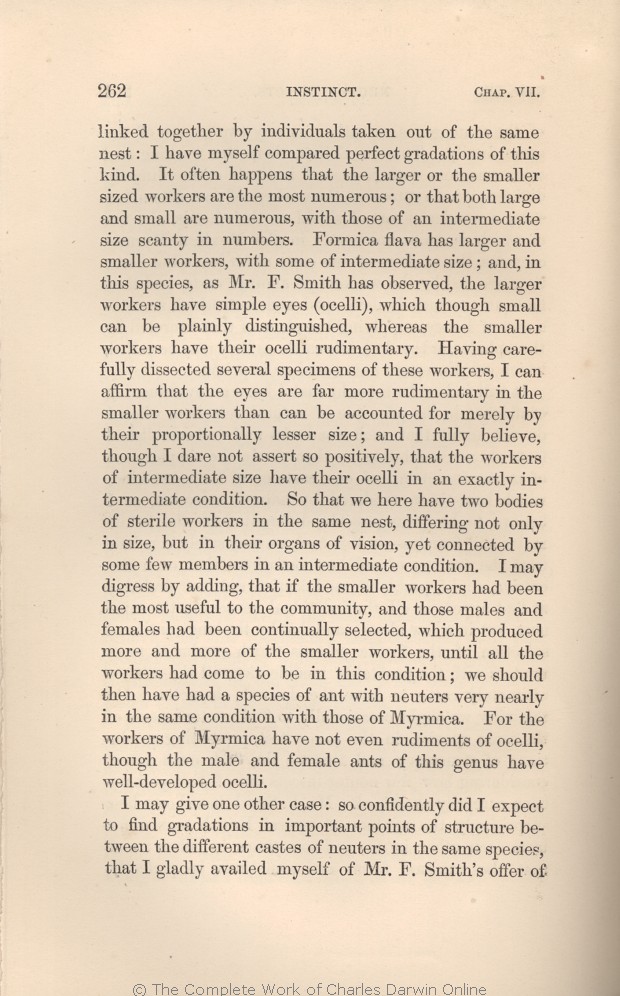linked together by individuals taken out of the same nest: I have myself compared perfect gradations of this kind. It
often | often 1859 1860 1861 1866 | | sometimes 1869 1872 |
| happens 1859 1860 1861 1869 1872 | | happen 1866 |
| with 1859 1860 1861 1866 | | whilst 1869 1872 |
| scanty 1859 1860 1861 1866 | | are scanty 1869 1872 |
| of 1859 1860 1861 1866 | | few of 1869 1872 |
| we here 1859 1860 1861 1866 | | here we 1869 1872 |
| intermediate 1859 1860 1861 1866 1869 | | inter- mediate 1872 |
| had come to be 1859 1860 1861 1866 |
| were 1869 1872 |
| very 1859 1860 1861 1866 | | in 1872 | very 1869 |
| in 1859 1860 1861 1866 1869 | in 1872 |
| with 1859 1860 1861 1866 1869 | | as 1872 |
|
|
I may give one other case: so confidently did I expect
to | to 1859 1860 1861 1866 1869 | | occasionally to 1872 |
| in 1859 1860 1861 1866 1869 | | of 1872 |
| points of 1859 1860 1861 1866 1869 | points of 1872 |
| structure 1859 1860 1861 1866 1869 | | structures 1872 |
|









